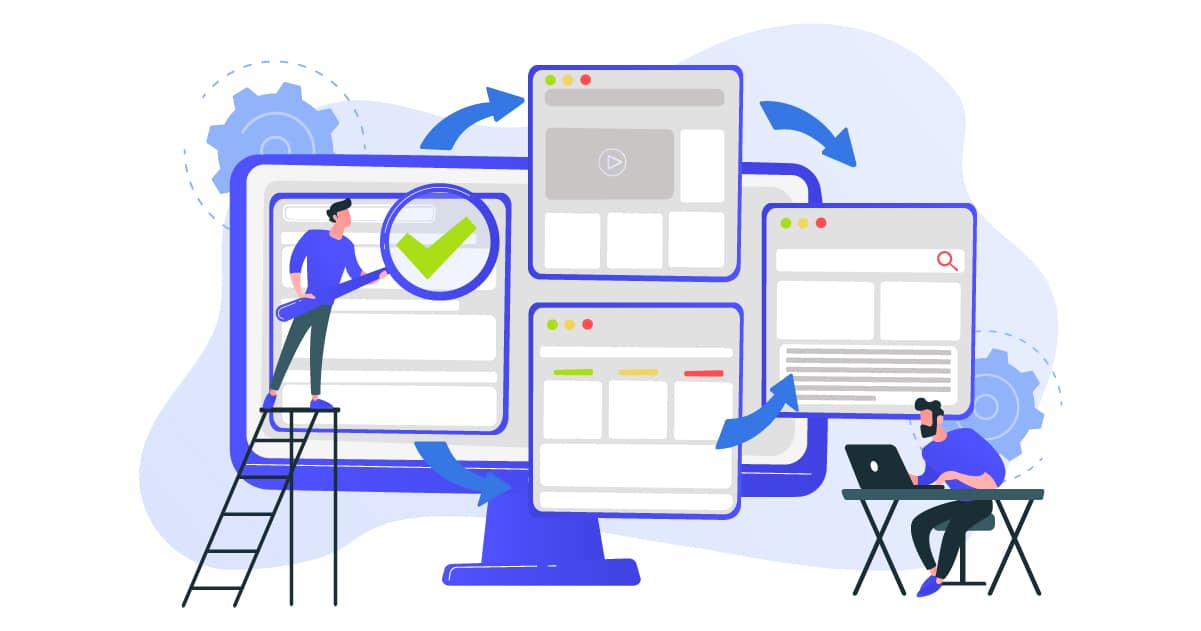Test Scenario creation is nothing new in the testing industry, but several testers still have ambiguities about the concept. So, what is a Test Scenario and why should you create it? Let’s find out:
How do you define a Test Scenario?
Test scenarios are basically anticipated modules or features that need to be tested. Also known as test suite/ test set, a Test Scenario may consist of one, two, or more Test Cases.
These are often confused with test cases while the latter is an actionable series of steps and conditions.
Simply speaking, a test scenario is a brief documentation about how an end-user might use an application. It is a crucial part of test management activity in which user experience is closely analyzed, and is called for in-depth testing. Several test cases are bunched into a Scenario.
Why are test scenarios important?
Test scenarios provide the ultimate basis for the stakeholders to meet anticipated app functionality and revenue results.
Test Scenarios are important sources to verify the performance of the system under test according to the real-world scenarios; this helps achieve app consistency after its release for public use. They help in deciding the end-to-end user interaction with the app or the intended product use.
Below are some strong reasons on how good test scenarios add more value to your system under test:
- Helps in achieving maximum test coverage and traceability matrix.
- Covers almost every system aspect that should be tested before the public product release.
- Helps in estimating the required testing effort or labor force, and organizing the testing process.
- Allows you to figure the crucial user flows, further aligning and prioritizing the testing efforts.
- May be taken as an acting proposal for the client.
- Validates if the system under test (SUT) works fine under every Test Case.
- Helps In improving the entirety of user experience (UX).
Pro tip: For better assemblage and sorting of test scenarios, use data-driven test management tools such as Kualitee.
Who writes test scenarios?
Test conditions and steps are usually approved by Business Analysts or QA leads. In general, testers are given the task to create test scenarios for all cases, particularly when dealing with intricate and sensitive applications from the Banking, Financial, Healthcare, or Paramedics sector.
How to create a test scenario
Following are the basic steps for creating a well-rounded test scenario:
- Study the requirement document which includes Business Requirement Specification (BRS), Software Requirement Specification (SRS), and Functional Requirement Specification (FRS) related to the system under test.
- Keenly study each requirement in isolation and understand important areas that require testing. Identify the possible issues pertaining to the specification. Furthermore, carefully examine and frame vulnerable app sections from the hacker’s point of view.
- Specify and list test scenarios that include every possible feature, user flow, and business logic of the SUT.
- After classifying the test scenarios, build a Traceability Matrix that reflects the cardinality and many-to-many relationship between all software components.
- Get the set of scenarios analyzed by the QA Manager and then forward them to the rest of the stakeholders steering the project wheels.
Pro tip: To keep it simple, create one test scenario per requirement or user story. If a test scenario is expected to serve multiple requirements, then make sure to check each requirement beforehand separately. Otherwise, you may skip some critical modules or functions.
Test management tools for test scenario creation
There are plenty of test case management tools like Kualitee that provide ease of work while you deal with uncountable feature requirements.
In the snapshot below, you can see the separate spaces for different information. You can write what needs to be tested for the right functionality checks. Create as many lists of test scenarios for different test case types. This helps you and keep your test case management super aligned and in control.
When not to use test scenarios?
Despite the value of test scenarios, you may not have to create them in the following situations:
- In the moments of urgency, or when testing an unstable software product. It is a waste of time to create comprehensive test scenarios for an unstable product, because the requirements will likely change after the software achieves stability
- When a project is based more on exploratory testing patterns and testers follow an unstructured approach due to frequent change requests.
- Sometimes the quantity of test scenarios becomes unmanageable and costly to execute. In such cases, it is better to prioritize test case executions based on end-user or client preferences.


























